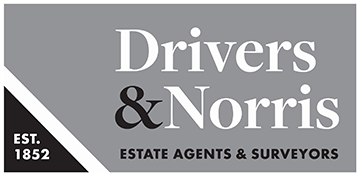Average house price edged higher in August, up by a marginal 0.4% as the rate of annual growth showed further signs of slowing, according to this morning's data released by Halifax.
However, despite a little heat coming off the pace of growth, first-time buyers won't feel like celebrating just yet as the latest figures show that the price for a typical UK property has hit another record high and now stands at £294,260.
Regions and nation's house prices
Wales remains at to the top of the table for annual house price inflation, up by +16.1%, the strongest level of growth since early 2005. This means average prices have risen by £31,246 over the last year, with an average property now costing £224,858.
The South West of England also continues to record a strong rate of annual growth, up by +14.5%, with an average property cost of £313,003.
The rate of annual growth in Northern Ireland eased back further last month to +12.5%, with a typical home now costing £185,505.
Scotland also saw another slowdown in the rate of annual house price inflation, to +9.4% from +9.5%. A Scottish home now costs an average of £204,362, another record high for the nation.
While London has continued to lag behind other nations and regions, the rate of annual house price inflation in London rose again to now stand at +8.8%, its highest level in over six years. With a typical property costing a record £554,718 the capital’s average house price has risen by £44,669 over the last 12 months.
Kim Kinnaird, Director, Halifax Mortgages, comments: “The slight fall seen in average house prices in July (-0.1%) was offset by a return to growth during August – although the increase (+0.4% month-on-month) was relatively modest compared to the rapid inflation we’ve witnessed in recent times. Over the last year, the rate of monthly house price inflation has averaged around
+0.9%.
“The typical house price reached another record high in August (£294,260) – as it has done in seven out of the eight months so far this year. However, the annual rate of growth dropped to +11.5%, from +11.8% in July, the lowest level in three months.
“While house prices have so far proved to be resilient in the face of growing economic uncertainty, industry surveys point towards cooling expectations across the majority of UK regions, as buyer demand eases, and other forward-looking indicators also imply a likely slowdown in market activity.
“Firstly, there is the considerable hit to people’s incomes from the cost-of-living squeeze. The 80% rise in the energy price cap for October will put more pressure on household finances, as will the further increases expected for January and April. At the levels being predicted, this is likely to constrain the amounts that prospective homebuyers can afford to borrow, on top of the adverse impact of higher energy prices on the wider economy.
“While government policy intervention may counter some of these impacts, borrowing costs are also likely to continue to rise, as the Bank of England is widely expected to continue raising interest rates into next year.
“With house price to income affordability ratios already historically high, a more challenging period for house prices should be expected. However, this should be viewed in the context of the exceptional growth witnessed in recent years, with average house prices have increased by more than £30,000 over the last 12 months alone.”
Tom Bill, Head of UK Residential Research at Knight Frank, commented: “The supply of houses tightened over the summer as more people took a summer holiday for the first time in three years, which kept prices buoyant. We expect more properties to be listed in the coming weeks as we move from a seller’s towards a buyer’s market. Together with rising mortgage rates, this will increase downwards pressure on prices after they have appeared to defy gravity for so long.”
Nathan Emerson, CEO of Propertymark, comments: “Pre-pandemic seasonal trends are re-emerging as a summer lull continues within the market. However, buyer confidence remains strong pushing up the average time to sell to record-breaking levels at over four months.
“The wider economic climate and rising energy costs have meant that buyers are negotiating harder and more and more buyers each month are starting to secure homes under the asking price.
“The number of properties coming on the market is fairly static and interest rates remain at a historically low level despite recent rises so we anticipate that house prices will continue to slow in growth month on month but won’t drop significantly before the end of the year.”
Mark Harris, chief executive of mortgage broker SPF Private Clients, says: "With the markets betting on another rate rise this month, the impetus on borrowers to move quickly to secure a competitive deal continues.
"Lenders have money to lend and are keen to lend although volume management is the name of the game. There are still good deals to be had although rising energy bills are impacting affordability calculations and lenders are broadening their policy for higher income households accordingly."
Jeremy Leaf, north London estate agent and a former RICS residential chairman, says: "Although we’ve noticed at the sharp end prices and activity has softened a little, market resilience continues to defy almost daily predictions of a slump.
"Worries about the rising cost of living, successive interest rate rises and the possibility of recession next year have not been sufficient to prompt a correction while such a significant mismatch between demand and supply remains, although prices may be more sensitive."
